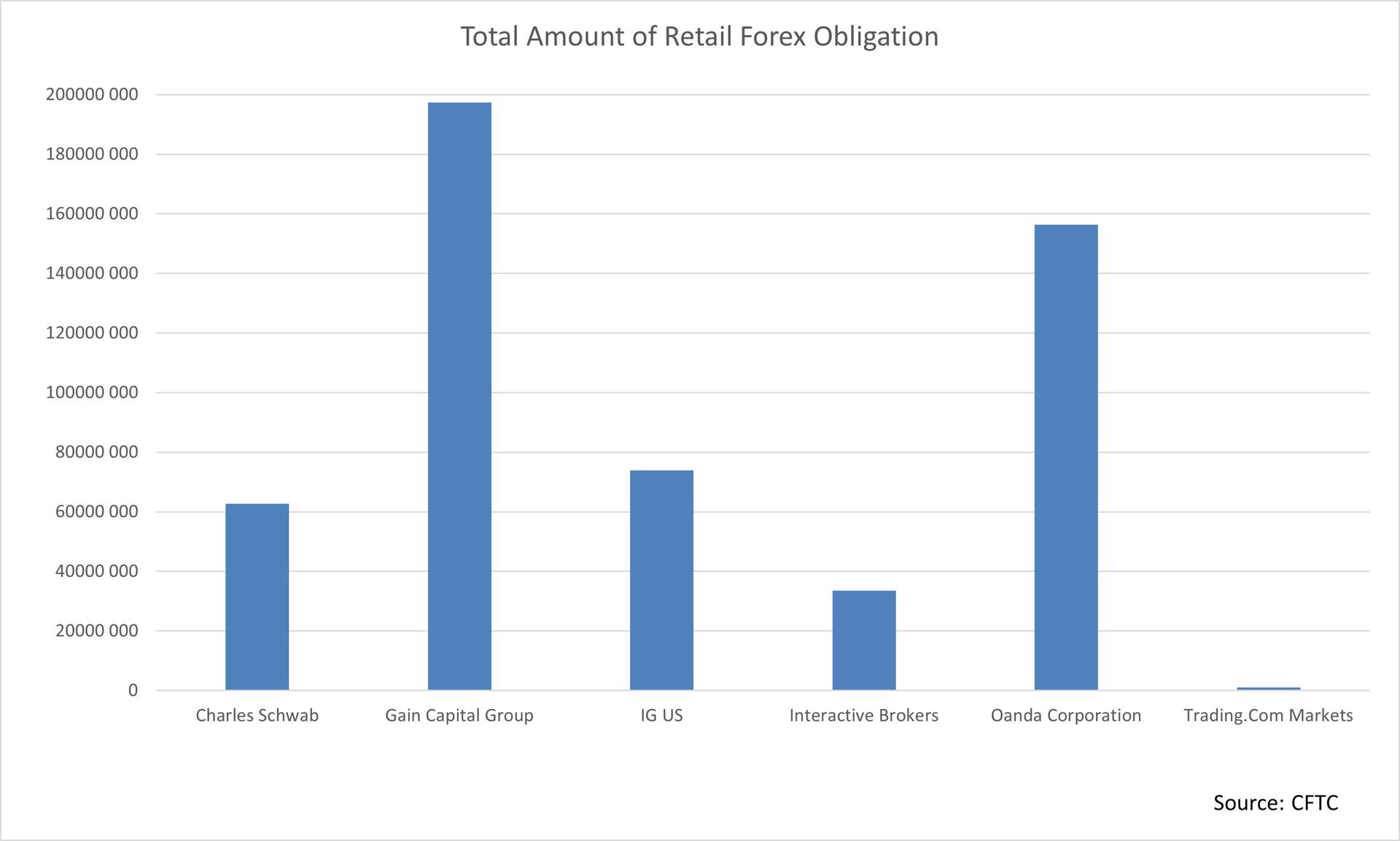August proved to be a favorable month for six registered retail forex (FX) brokers operating in the United States. According to the latest data from the Commodity Futures Trading Commission (CFTC), the value of their clients' deposits increased 1.2% month-over-month, from $518.5 million to $525 million.
CFTC Releases Latest Data for FCMs and RFEDs
According to CFTC regulations, every retail foreign exchange dealer (RFED) and futures commission merchant (FCM) must report monthly financial positions to the commission, including adjusted net capital, customers' assets, and the total amount of retail forex obligations.
Retail forex obligations represent the total amount of funds at an FCM or RFED obtained by combining all money, securities, and property deposited by a retail forex customer into a retail forex account or accounts, adjusted for the realized and unrealized net profit or loss.
Out of 62 registered FCMs and RFEDs, six firms publish data on obligations . These include Charles Schwab, Gain Capital, IG US, Interactive Brokers, OANDA Corporation, and Trading.com. Among them, Gain Capital currently handles the largest deposits, valued at nearly $194 million. Next is OANDA with $156 million, followed by IG US ($63 million), Charles Schwab ($73 million), Interactive Brokers ($33 million), and Trading.com ($1 million).

Compared to August, the market share of individual brokers remained largely unchanged. Gain Capital continues to dominate, accounting for nearly 40% of the market share, followed by OANDA with a 30% share. Interestingly, IG US and Charles Schwab switched places again. IG US overtook the largest asset manager, and its market share increased to nearly 15%, while Charles Schwab dropped to 12%.
Increased Activity in the FX/CFD Industry
Finance Magnates also conducts separate research on retail investor activity. Using data provided by CPattern, we present our own indicators of historical changes in average deposits, average withdrawals, and average first-time deposits (FTD). According to the latest report published last month and covering May 2023, it recorded the highest number of deposits in over a year.

While both of our leading indicators were slightly lower, they managed to remain at the highest levels over the past five months for deposits and even the past twelve months for withdrawals. An average single withdrawal is still higher than a deposit, amounting to $3,159.42 in May. An average deposit dropped during this period to $2,214.65.

















